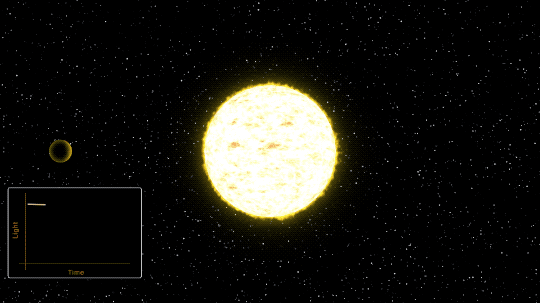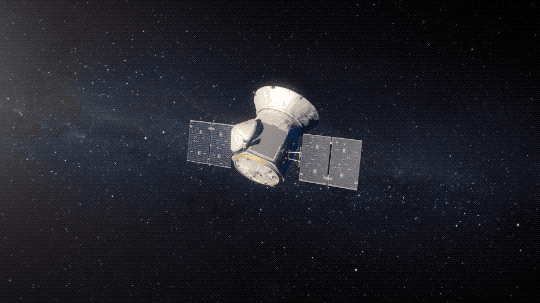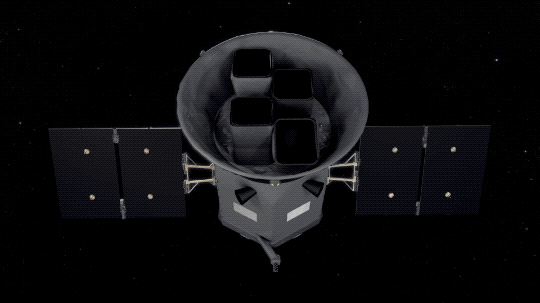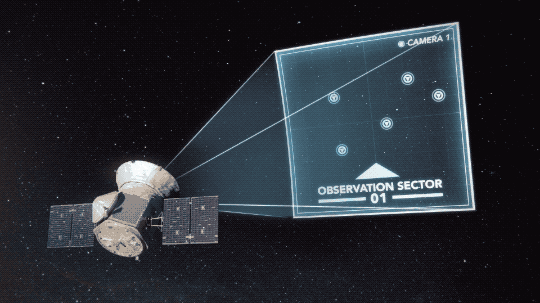
Our Transiting Exoplanet Survey Satellite (TESS), launched last year on April 18, is completing a year in space, surveying the skies to find the closest, most exciting planets outside our solar system for further study. Worlds that TESS is hunting for include super-Earths, rocky planets, gas giants, and maybe even some Earth-sized planets — and much, much more! TESS is scanning the whole sky one section at a time, monitoring the brightness of stars for periodic dips caused by planets transiting (that is, passing in front of) those stars. So far, TESS has found 548 candidates and 10 confirmed exoplanets.

Since its launch, TESS has orbited Earth a total of 28 times. TESS has a unique elliptical orbit that circuits around Earth twice every time the Moon orbits. This allows TESS’s cameras to monitor each patch of sky continuously for nearly a month at a time. To get into this special orbit, TESS made a series of loops culminating in a lunar gravitational assist, which gave it the final push it needed.

Did you know that TESS has some serious mileage? The spacecraft has traveled about 20 million miles so far, which works out to an average of about 2,200 miles per hour. That’s faster than any roadrunner we’ve ever seen! This would be four times faster than an average jet. You’d get to your destination in no time!

TESS downloads data during its closest approach to Earth about every two weeks. So far, it has returned 12,000 gigabytes of data. That’s as if you streamed about 3,000 movies on Netflix. Get the popcorn ready! If you total all the pixels from every image taken using all four of the TESS cameras — which is about 600 full-frame images per orbit, you’d get about 805 billion pixels. This is like half a million iPhone screens put together!

When the Kepler Space Telescope reached the end of its mission, it passed the planet-finding torch to TESS. Where Kepler’s view was deep — looking for planets as far away as 3,000 light-years — TESS’s view is wide, surveying nearly the entire sky over two years. Each sector TESS views is 20 times larger than Kepler’s field of view.

TESS will continue to survey the sky and is expected to find about 20,000 exoplanets in the two years it’ll take to complete a scan of nearly the entire sky. Before TESS, several thousand candidate exoplanets were found, and more than 3,000 of these were confirmed. Some of these exoplanets are expected to range from small, rocky worlds to giant planets, showcasing the diversity of planets in the galaxy.
The TESS mission is led by MIT and came together with the help of many different partners. You can keep up with the latest from the TESS mission by following mission updates and keep track of the number of candidates and confirmed exoplanets.
Make sure to follow us on Tumblr for your regular dose of space: http://nasa.tumblr.com.





Комментариев нет:
Отправить комментарий